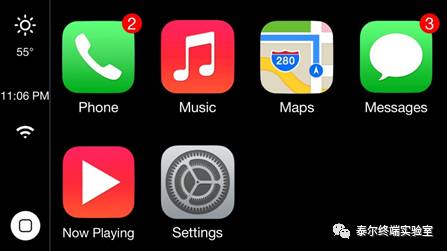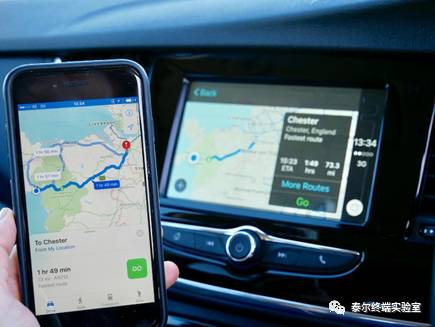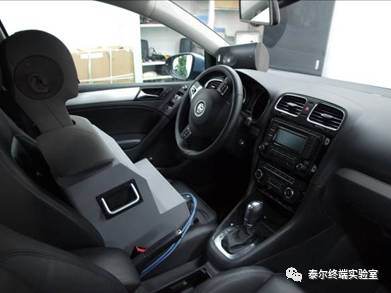With the rapid development of mobile internet, in-car infotainment systems need to obtain more flexible and rich applications and services through communication networks. For safety and stability considerations, services and applications running directly on in-car infotainment systems need to undergo strict testing and verification. Currently, the types of services that can be provided are still relatively single and require a long R&D cycle, with slow update speeds. Moreover, core functions of in-car information services such as safety and rescue require a very reliable and secure transmission channel, with extremely high safety requirements. The transmission channels provided by existing embedded communication modules in in-car infotainment systems are usually isolated from the internet. If all user needs for in-car information services are met directly through the embedded channels of the infotainment system, it poses a significant risk to driving safety and is not conducive to the healthy development of in-car information services.
With the popularity of smartphones, the interconnection technology between in-car infotainment systems and smartphones has emerged, becoming the most widely used mode of in-car information service provision in recent years.

As early as 2013, Apple Inc. announced their in-car embedded system at WWDC, and officially named it CarPlay in March 2014, aiming to allow drivers to conveniently and safely use iOS device functions while driving.
CarPlay seamlessly integrates the user’s iOS device and iOS experience with the car’s dashboard and display system. If a user’s car is equipped with CarPlay, they can connect their iOS device and interact with it using the car’s built-in display and control buttons, or through Siri’s hands-free functionality. Users can easily and safely make calls, listen to music, send and receive messages, use navigation, and more.
CarPlay allows the majority of the basic functions of the iPhone to be used through the car’s control panel. Some of these functions include the Siri voice assistant, iTunes music playback, Apple Maps, and messaging services. With CarPlay, drivers can make and receive calls without taking their hands off the wheel and can listen to voicemail content. To use these features on their iOS device, drivers can touch the car’s driving control panel as if they were touching their phone, which reduces distractions while driving. Additionally, with a button on the steering wheel, drivers can activate Siri. Apple will also allow manufacturers to collect data on the car’s engine model, remaining driving distance, outside temperature, and other data through various sensors, and report them to Apple devices via CarPlay, enabling drivers to know the status of their cars through their iOS devices. With the development of CarPlay, it will have more certified applications, providing users with a richer experience while laying a good foundation for future autonomous driving.

However, since CarPlay is a product of Apple, the company will naturally introduce a host of rules and guidelines that manufacturers must adhere to, and these rules will be continuously updated based on user and market demands.
Like other accessories designed for Apple products, peripherals that support CarPlay must comply with Apple’s MFi certification, and only devices embedded in the car body qualify for CarPlay’s MFi certification. In addition, the device must also have built-in noise-canceling speakers, support 24bit 48kHz audio, have a screen of 6 inches 800 x 480 or higher, and a physical button to activate Siri. Therefore, consumers can use the support for CarPlay as an important reference for the multimedia performance of a car model when choosing a vehicle.

The audio testing capabilities of the Thiel Terminal Laboratory have been recognized by Apple CarPlay, and the laboratory also regularly participates in the development of audio performance and testing standards for in-car devices within the ITU-T P.1100/P.1110 series, which are directly referenced by the CarPlay certification system. The laboratory has established cooperative relationships with many car machine suppliers and is engaged in business exchanges, helping them obtain MFi certification, enhance product competitiveness, and promote the healthy development of the industry.